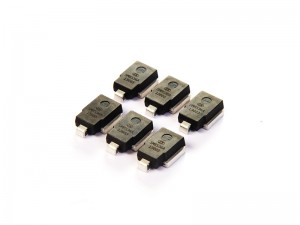Although in the second half of 2021, some car companies pointed out that the chip shortage problem in 2022 will be improved, but the OEMs have increased purchases and a game mentality with each other, coupled with the supply of mature automotive-grade chip production capacity Businesses are still in the stage of expanding production capacity, and the current global market is still seriously affected by the lack of cores.
At the same time, with the accelerated transformation of the automotive industry towards electrification and intelligence, the industrial chain of chip supply will also undergo dramatic changes.
1. The pain of MCU under the lack of core
Now looking back at the shortage of cores that began at the end of 2020, the outbreak is undoubtedly the main cause of the imbalance between supply and demand of automotive chips. Although a rough analysis of the application structure of global MCU (microcontroller) chips shows that from 2019 to 2020, the distribution of MCUs in automotive electronics applications will occupy 33% of the downstream application market, but compared with remote online office As far as upstream chip designers are concerned, chip foundries and packaging and testing companies have been seriously affected by issues such as the shutdown of the epidemic.
Chip manufacturing plants belonging to labor-intensive industries will suffer from serious manpower shortages and poor capital turnover in 2020. After the upstream chip design has been transformed into the needs of car companies, it has not been able to fully schedule production, making it difficult for the chips to be delivered to full capacity. In the hands of the car factory, the situation of insufficient vehicle production capacity appears.
In August last year, STMicroelectronics’ Muar plant in Muar, Malaysia was forced to shut down some factories due to the impact of the new crown epidemic, and the shutdown directly led to the supply of chips for Bosch ESP/IPB, VCU, TCU and other systems being in a state of supply interruption for a long time.
In addition, in 2021, the accompanying natural disasters such as earthquakes and fires will also cause some manufacturers to be unable to produce in the short term. In February last year, the earthquake caused severe damage to Japan's Renesas Electronics, one of the world's major chip suppliers.
The misjudgment of the demand for in-vehicle chips by car companies, coupled with the fact that the upstream fabs have converted the production capacity of in-vehicle chips into consumer chips in order to guarantee the cost of materials, has resulted in the MCU and CIS that have the highest overlap between automotive chips and mainstream electronic products. (CMOS image sensor) is in serious shortage.
From a technical point of view, there are at least 40 kinds of traditional automotive semiconductor devices, and the total number of bicycles used is 500-600, which mainly include MCU, power semiconductors (IGBT, MOSFET, etc.), sensors and various analog devices. Autonomous vehicles also A series of products such as ADAS auxiliary chips, CIS, AI processors, lidars, millimeter-wave radars and MEMS will be used.
According to the number of vehicle demand, the most affected in this core shortage crisis is that a traditional car needs more than 70 MCU chips, and the automotive MCU is ESP (Electronic Stability Program System) and ECU ( Main components of vehicle main control chip). Taking the main reason for the decline of Haval H6 given by Great Wall many times since last year as an example, Great Wall said that the serious sales decline of H6 in many months was due to the insufficient supply of the Bosch ESP it used. The previously popular Euler Black Cat and White Cat also announced a temporary suspension of production in March this year due to issues such as ESP supply cuts and chip price increases.
Embarrassingly, although auto chip factories are building and enabling new wafer production lines in 2021, and trying to transfer the process of auto chips to the old production line and the new 12-inch production line in the future, in order to increase production capacity and gain economies of scale, However, the delivery cycle of semiconductor equipment is often more than half a year. In addition, it takes a long time for production line adjustment, product verification and production capacity improvement, which makes the new production capacity likely to be effective in 2023-2024. .
It is worth mentioning that although the pressure has lasted for a long time, car companies are still optimistic about the market. And the new chip production capacity is destined to solve the current largest chip production capacity crisis in the future.
2. New battlefield under electric intelligence
However, for the automotive industry, the resolution of the current chip crisis may only solve the urgent need of the current market supply and demand asymmetry. In the face of the transformation of electric and intelligent industries, the supply pressure of automotive chips will only increase exponentially in the future.
With the increasing demand for vehicle integrated control of electrified products, and at the moment of FOTA upgrade and automatic driving, the number of chips for new energy vehicles has been upgraded from 500-600 in the era of fuel vehicles to 1,000 to 1,200. The number of species has also increased from 40 to 150.
Some experts in the automotive industry said that in the field of high-end smart electric vehicles in the future, the number of single-vehicle chips will increase several times to more than 3,000 pieces, and the proportion of automotive semiconductors in the material cost of the entire vehicle will increase from 4% in 2019 to 12 in 2025. %, and may increase to 20% by 2030. This not only means that in the era of electric intelligence, the demand for chips for vehicles is increasing, but it also reflects the rapid rise in the technical difficulty and cost of chips required for vehicles.
Unlike traditional OEMs, where 70% of the chips for fuel vehicles are 40-45nm and 25% are low-spec chips above 45nm, the proportion of chips in the 40-45nm process for mainstream and high-end electric vehicles on the market has dropped to 25%. 45%, while the proportion of chips above 45nm process is only 5%. From a technical point of view, mature high-end process chips below 40nm and more advanced 10nm and 7nm process chips are undoubtedly new competition areas in the new era of the automotive industry.
According to a survey report released by Hushan Capital in 2019, the proportion of power semiconductors in the whole vehicle has rapidly increased from 21% in the era of fuel vehicles to 55%, while MCU chips have fallen from 23% to 11%.
However, the expanding chip production capacity disclosed by various manufacturers is still mostly limited to the traditional MCU chips currently responsible for engine/chassis/body control.
For electric intelligent vehicles, AI chips responsible for autonomous driving perception and fusion; power modules such as IGBT (insulated gate dual transistor) responsible for power conversion; sensor chips for autonomous driving radar monitoring have greatly increased demand. It will most likely become a new round of "lack of core" problems that car companies will face in the next stage.
However, in the new stage, what hinders car companies may not be the production capacity problem interfered by external factors, but the "stuck neck" of the chip restricted by the technical side.
Taking the demand for AI chips brought by intelligence as an example, the computing volume of autonomous driving software has already reached the double-digit TOPS (trillion operations per second) level, and the computing power of traditional automotive MCUs can hardly meet the computing requirements of autonomous vehicles. AI chips such as GPUs, FPGAs, and ASICs have entered the automotive market.
In the first half of last year, Horizon officially announced that its third-generation vehicle-grade product, the Journey 5 series chips, was officially released. According to official data, the Journey 5 series chips have a computing power of 96TOPS, a power consumption of 20W, and an energy efficiency ratio of 4.8TOPS/W. . Compared with the 16nm process technology of the FSD (fully autonomous driving function) chip released by Tesla in 2019, the parameters of a single chip with a computing power of 72TOPS, a power consumption of 36W and an energy efficiency ratio of 2TOPS/W have been greatly improved. This achievement has also won the favor and cooperation of many auto companies including SAIC, BYD, Great Wall Motor, Chery, and Ideal.
Driven by intelligence, the industry's involution has been extremely rapid. Starting from Tesla's FSD, the development of AI main control chips is like opening a Pandora's box. Shortly after Journey 5, NVIDIA quickly released the Orin chip that will be single-chip. The computing power has increased to 254TOPS. In terms of technical reserves, Nvidia even previewed an Atlan SoC chip with a single computing power of up to 1000TOPS for the public last year. At present, NVIDIA firmly occupies a monopoly position in the GPU market of automotive main control chips, maintaining a market share of 70% all year round.
Although the entry of the mobile phone giant Huawei in the automotive industry has set off waves of competition in the automotive chip industry, it is well known that under the interference of external factors, Huawei has rich design experience in a 7nm process SoC, but cannot help top chip manufacturers. market promotion.
Research institutions speculate that the value of AI chip bicycles is rising rapidly from US$100 in 2019 to US$1,000+ by 2025; at the same time, the domestic automotive AI chip market will also increase from US$900 million in 2019 to 91 in 2025. One hundred million U.S. dollars. The rapid growth of market demand and the technological monopoly of high-standard chips will undoubtedly make the future intelligent development of car companies even more difficult.
Similar to the demand in the AI chip market, IGBT, as an important semiconductor component (including chips, insulating substrates, terminals and other materials) in the new energy vehicle with a cost ratio of up to 8-10%, also has a profound impact on the future development of the automotive industry. Although domestic companies such as BYD, Star Semiconductor, and Silan Microelectronics have begun to supply IGBTs for domestic car companies, for now, the IGBT production capacity of the above-mentioned companies is still limited by the scale of the companies, making it difficult to cover the rapidly rising domestic new energy sources. market growth.
The good news is that in the face of the next stage of SiC replacing IGBTs, Chinese companies are not far behind in the layout, and expanding SiC design and production capabilities based on IGBT R&D capabilities as soon as possible is expected to help car companies and technologies. Manufacturers gain an edge in the next stage of competition.
3. Yunyi Semiconductor, core intelligent manufacturing
Faced with the shortage of chips in the automotive industry, Yunyi is committed to solving the supply problem of semiconductor materials for customers in the automotive industry. If you want to know about Yunyi Semiconductor accessories and make an inquiry, please click the link: https://www.yunyi-china.net/semiconductor/.
Post time: Mar-25-2022



